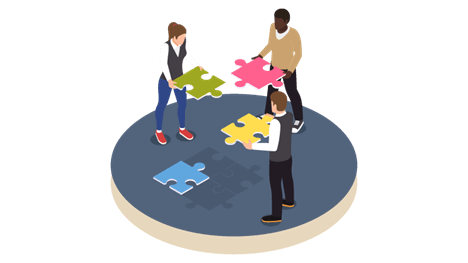Remember Candy Crush? The level of addiction would have been nothing if we didn’t know other players’ scores. With proper planning and execution, leaderboards can be a powerful gamification tool to engage your learners. Leaderboard gamification transforms learning into fun!
Leaderboards act as an effective engagement tool and drive you to play on! Take Microsoft as an example. The giant software house takes leaderboards as a key engagement tool as their Xbox Live games include the game mechanic.
Moreover, almost 90% of mobile games use leaderboard gamification to keep players engaged and craving more. Leaderboards are described as “an original and best social feature!” by Game Sparks developers.
What are Leaderboards?
Gamification refers to the application of gaming techniques to non-gaming scenarios. Talking about learning context could involve badges, adding points, and milestone achievements within the learning management system. The more you explore the learning system, the more points and badges you will get.
In simple terms, a leaderboard is a list of high scorers. The leaderboard ranks players related to their relative success; it measures them against a specific criterion. As a result, leaderboards expose the top performers in a certain activity.
Also, leaderboards are a competitive indicator. They help to match a player’s performance to the performance of others.
Several companies use leaderboard gamification to boost engagement. For example, when Opentext used a leaderboard as a solution. After testing in a small group for two weeks, they saw a hike of 60% in active participation compared to the rest of the organization.
How to Use Leaderboard Gamification to Engage Learners
1. Ranking Through Rewards
Learners earn virtual rewards (badges or reward points) for completing different activities. Adding leaderboard gamification into the mix can take learning to a whole new level! Rank learners according to how many rewards they have achieved.
With the increase in scores, their position on the leaderboards would go up. Companies can display each participant’s score to see who leads the charts. Let the battle begin through leaderboard gamification using rewards!
2. Incentivize Action
Learners can earn badges or reward points for anything they do during the learning phase. Whether you’re completing your profile or updating your training status, you can expect to get rewards!
As an administrator, you decide which actions to incentivize through rewards. Choose and encourage actions on a leaderboard that help you reach your learning and business goals.
The attraction of the top position will motivate learners to engage with the platform and training. They will go the extra mile to beat their rival on the leaderboard if they know they are only one action away!
3. Customize for Epic Meaning
Gamification enables you to add extra layers to give meaning through leaderboards. You can play with the title and description of every leaderboard to fit the training themes. For instance, if you run an institute, you could name the leaderboard “Top Learners” or “Learner of the Session.”
Whatever you choose to do, make sure your title resembles your corporate mission. This way, your gamification of a leaderboard will remind learners how their growth helps the company’s bigger goals.
4. Boost Collaborative Social Learning
Leaderboard gamification is beyond throw-competition and competing for the top spot. Leaderboard gamification can be used to get people in a learning system to work together, learn from each other, and share what they know.
Administrators can create discussion groups for any organization-related topic, such as “Fresh Product Lines.” Learners can earn points for making each comment, and their score will determine their place on the leaderboard based on the discussion group.
The attraction of leading the charts can lure learners to join the conversations. They push learners to give their input. This will foster a healthy learning community and better content.
5. Spot Outliers and Trends
Leaderboard gamification allows admins to highlight shifts in learner engagement. These trends are key and should aid in updating your training strategy. Those at the bottom of the leaderboard need special attention for improvement.
Spotting outliers and trends is crucial because once you know about a problem, you can respond to it! For example, you can launch a targeted campaign to support your worst performers.
Final Words
That’s it. Use leaderboard gamification to fuel the competitive spirits of your learners. Fighting for the top spot always helps make the learning environment a fun-filled activity.
We covered what leaderboards are and how you can use them to support workplace learning. We saw how big corporations use the leaderboard gamification technique from different angles. Now it’s up to you to use this aspect of gamification to make learning more fun.


